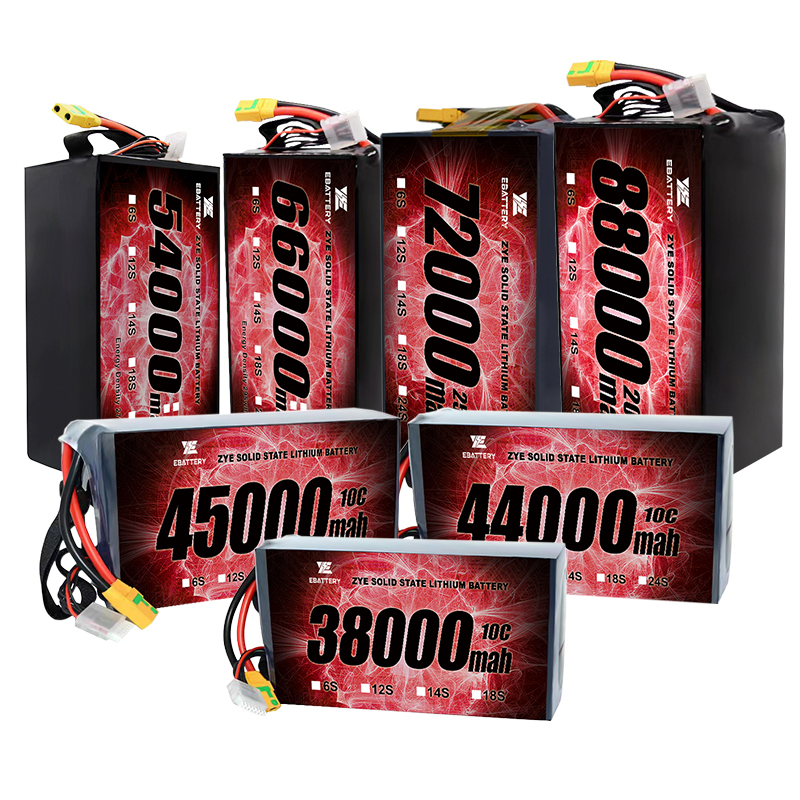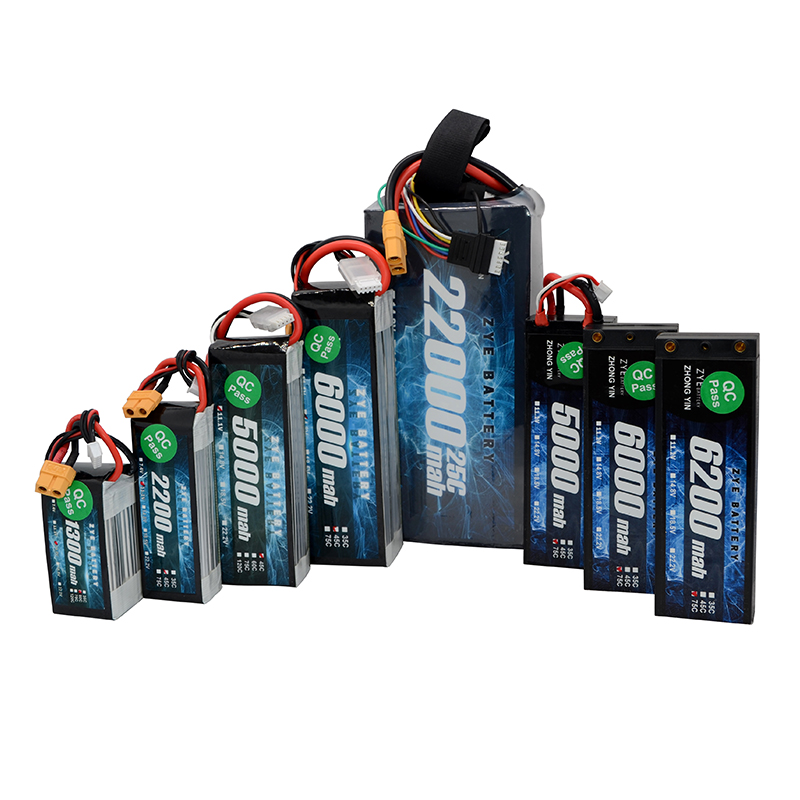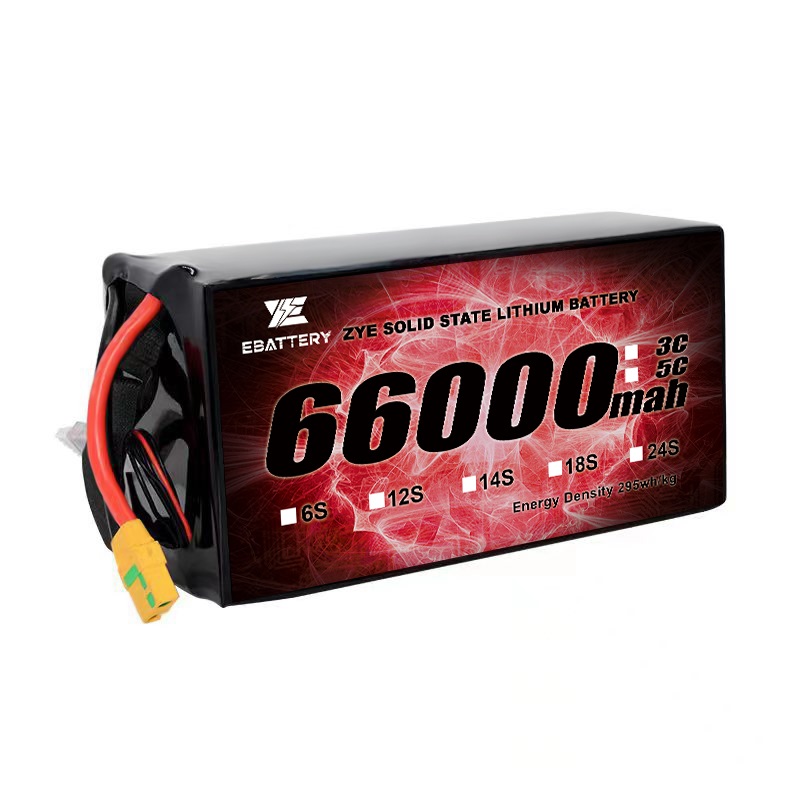What are the differences in the manufacturing of solid state batteries?
2025-11-25
From production lines to flight operations, semi-solid-state technology is redefining the performance standards of drone power systems through manufacturing innovations and technological breakthroughs.
Precision Control from Materials to Finished Products
The manufacturing of UAV semi-solid-state batteries represents not a simple upgrade, but four breakthrough innovations in key processes built upon traditional lithium batteries. These changes ensure enhanced safety while laying the foundation for low internal resistance performance.
The low internal resistance characteristic of UAV semi-solid batteries is not coincidental but results from the combined effects of material innovation, structural optimization, and manufacturing precision. This enables them to meet the stringent demands of high-power output and rapid response required by UAVs.
Solid electrolytes are neither fully liquid nor fully solid, necessitating precise control of their rheological properties. Maintaining this consistency becomes increasingly complex as production scales expand. Variations in temperature, pressure, and mixing ratios significantly impact electrolyte performance, thereby affecting overall battery efficiency.

In traditional liquid batteries, unstable SEI (Solid Electrolyte Interphase) films readily form between the electrolyte and electrodes, causing internal resistance to rise rapidly with cycling. Semi-solid batteries, however, achieve over 50% reduction in interfacial impedance through the synergistic effects of coated separator technology and electrode surface modification.
How do semi-solid electrolytes reduce interfacial resistance?
1. Understanding the key to semi-solid batteries' lower internal resistance lies in their innovative electrolyte composition, which differs significantly from traditional battery designs. While conventional batteries typically use liquid electrolytes, semi-solid batteries employ gel-like or paste-like electrolytes that offer numerous advantages in reducing internal resistance. This unique semi-solid state maximizes efficiency and extends battery lifespan by minimizing factors that cause energy loss.
2. The lower internal resistance of semi-solid batteries stems from a delicate balance between ionic conductivity and electrode contact. While liquid electrolytes generally exhibit high ionic conductivity, their fluid nature can lead to poor electrode contact. Conversely, solid electrolytes provide excellent electrode contact but often struggle with low ionic conductivity.
3. In semi-solid batteries, the gel-like viscosity of the electrolyte promotes a more stable and uniform interface with electrodes. Unlike liquid electrolytes, semi-solid electrolytes ensure superior contact between electrode and electrolyte surfaces. This enhanced contact minimizes the formation of resistance layers, enhances ion transfer, and reduces the battery's overall internal resistance.
4. The semi-solid nature of the electrolyte helps address challenges associated with electrode expansion and contraction during charge and discharge cycles. The gel-like structure provides additional mechanical stability, ensuring electrode materials remain intact and aligned even under varying stresses.

Thickness Design of Electrode Layers in Semi-Solid Batteries
Theoretically, thicker electrodes can store more energy, but they also pose challenges regarding ion transport and conductivity. As electrode thickness increases, ions must travel greater distances, potentially leading to higher internal resistance and reduced power output.
Optimizing the thickness of semi-solid battery layers requires balancing energy density with power output. Approaches include:
1. Developing novel electrode structures that enhance ion transport
2. Incorporating conductive additives to improve conductivity
3. Employing advanced manufacturing techniques to create porous structures within thicker electrodes
4. Implementing gradient designs that vary electrode thickness composition and density
The optimal thickness for semi-solid battery layers ultimately depends on specific application requirements and trade-offs between energy density, power output, and manufacturing feasibility.
The layer thickness design of semi-solid batteries similarly subverts conventional wisdom.
By achieving a delicate balance between thin electrolyte layers and thick electrode layers, it simultaneously enhances both energy density and power performance. This innovative “thin electrolyte + thick electrode” architecture stands as a defining characteristic distinguishing it from conventional batteries.
Equipment used in semi-solid battery manufacturing typically requires custom design or significant modification of existing machinery.
This custom nature of production tools adds another layer of complexity to scaling operations. Another scalability challenge lies in raw material procurement. Semi-solid batteries often utilize specialized compounds that may not be readily available in bulk quantities. As production scales up, ensuring a stable supply chain for these materials becomes critical.
The streamlined filling process also contributes to enhanced safety during manufacturing. This not only improves worker safety but also reduces production costs over time.
Conclusion:
From assembly lines to aerial operations, the manufacturing innovation and low internal resistance characteristics of drone semi-solid batteries are redefining industry standards. When agricultural drones maintain stable power output in -40°C frigid conditions, or logistics drones execute emergency evasions via 7C peak discharge, these scenarios vividly demonstrate the value of technological innovation.
Looking ahead, the continued refinement of semi-solid battery manufacturing technology is crucial for bringing this promising technology to market at scale. Overcoming current challenges in production scale and material consistency requires sustained research, investment, and innovation.
























































